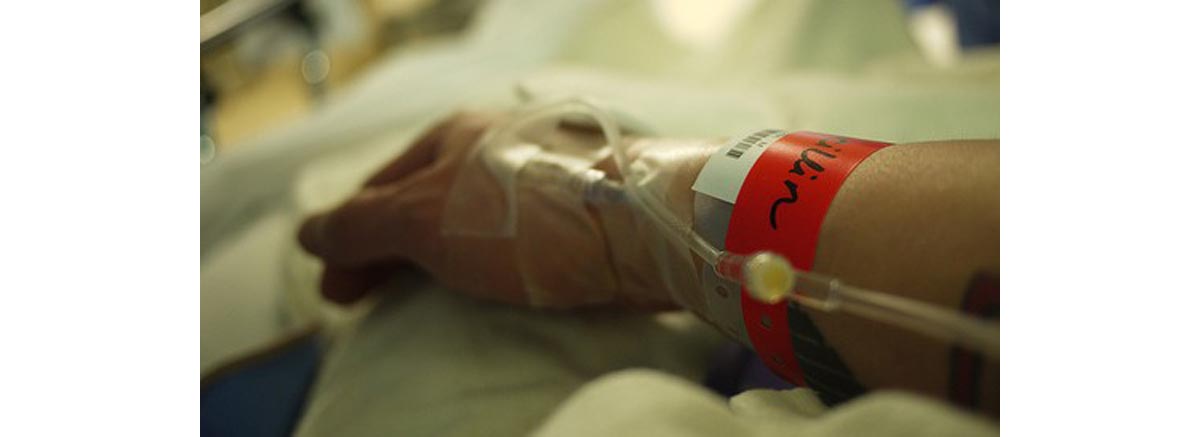Table of Contents
Intravenous, in-the-vein (IV) lines are a fact of life for the majority of hospital patients. If you are admitted into the medical ward of just about any hospital in the United States, chances are you will have one or more IV portals inserted into your veins even if you are not receiving fluids or medications through them. They're the fastest way to get life-saving meds to you, and are therefore routinely inserted in case of unexpected complications.

How Is an IV Inserted?
Most of the time, an IV is placed in a vein (a blood vessel that carries blood back to the heart) in the arms, or less often in the legs or (for infants) scalp.
The IV assembly consists of a needle inside a catheter, which is like a little pipe, inserted about 1 inch (20-25 mm) into a vein. Part of the catheter remains outside the skin, and it can be connected to a syringe, or an infusion line (connected to an "IV bag"), or capped with a haplock for potential future use.
Do I Really Have to Have an IV?
Hospital rules usually require patients to have IV lines from the moment they are admitted until the moment they leave, just in case emergency medications are needed, even if intravenous infusion is not needed when the catheter is put in. If you are that rare patient who “codes” and needs epinephrine and atropine to restart your heart, or if you are unable to drink water and you need intravenous fluids to prevent your skin and veins from collapsing, then you will appreciate the value of having an IV line any time you are hospitalized. Many medications have to be delivered by IV, and sometimes the only way a hospital patient can get nutrients is by IV.
IV lines are usually absolutely necessary. But nobody likes getting them.
What Makes Getting an IV (Sometimes but Not Always) Unpleasant?
Inexperienced (and out-of-practice) nurses sometimes need more than one poke to get a line started. Veins can roll and "hide" at the exact moment the nurse inserts the needle. Veins may be crooked, and they may have valves that stop the needle before it can be properly inserted. If the catheter won't go far enough into a vein, it has to be taken out and reinserted elsewhere.
Sometimes inserting a needle into a vein to set up an IV line can make a bloody mess, especially if you are on an anti-coagulant (blood thinning) medication, as you almost certainly would be in you are in the hospital for heart issues or after-care of almost any kind of surgery. And sometimes the skin is simply unusually dried out and tough. A needle that should slip through the skin easily does not, because the skin fights back.
Skilled nurses and paramedics often can deal with all of these issues and still manage to insert an IV line fairly expertly, but you can make the experience easier as a patient, too. It is a good idea to know the following five ways to make an getting an IV line more comfortable before you go to the hospital, and to review them before taking a child to hospital treatment.
- Hartstein BH, Barry JD. Mitigation of pain during intravenous catheter placement using a topical skin coolant in the emergency department. Emerg Med J. 2008 May.25(5):257-61
- Weiner SG, Sarff AR, Esener DE, Shroff SD, Budhram GR, Switkowski KM, Mostofi MB, Barus RW, Coute RA, Darvish AH. Single-operator Ultrasound-guided Intravenous Line Placement by Emergency Nurses Reduces the Need for Physician Intervention in Patients with Difficult-to-establish Intravenous Access. J Emerg Med. 2012 Oct 25. pii: S0736-4679(12)01087-6. doi: 10.1016/j.jemermed.2012.08.021. [Epub ahead of print]
- Photo courtesy of thirteenofclubs on Flickr: www.flickr.com/photos/thirteenofclubs/5458070010
- Photo courtesy of tamakisono on Flickr: www.flickr.com/photos/tamakisono/8407942171

